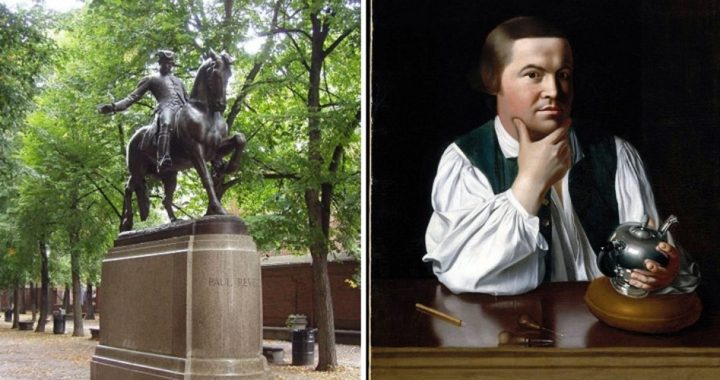
Listen my children and you shall hear
Of the midnight ride of Paul Revere,
On the eighteenth of April, in Seventy-five;
Hardly a man is now alive
Who remembers that famous day and year.
Thus say the familiar words of the Henry Wadsworth Longfellow poem commemorating the mission of silversmith Paul Revere to warn his fellow patriots of the movement of British troops.
Longfellow’s words are poignant and inspiring, but what is “the rest of the story?”
Throughout 1774 and Spring of 1775, Paul Revere was hired by the Boston Committee of Correspondence and the Massachusetts Committee of Safety to serve as an “express rider,” an 18th-century mailman of sorts. Revere’s job was to carry information — news, letters, dispatches, copies of proposed resolutions — to dispersed patriots throughout New England and as far away as New York and Philadelphia.
This day, April 18, Dr. Joseph Warren notified Revere that he was to ride to Lexington, Massachusetts, and alert local patriot leaders Samuel Adams and John Hancock that British regulars were marching to arrest them.
Having crossed the Charles River by a boat rowed by two associates, Revere arranged to secure a horse on loan from his friend, John Larkin. Once mounted and prepared, Revere rode over to meet with members of the Charlestown Sons of Liberty to double-check their understanding of the signals they had agreed upon the weekend prior for communicating British troop movement: Two lanterns would be hung in the bell tower of Christ Church in Boston if the troops were advancing across the Charles River; one lantern would be hung if the Redcoats were marching “by land” across Boston Neck.
Off he sped to Lexington, stopping at the homes of patriots warning them of the coming of the British army. For hours, Revere rode from house to house, alerting the families of their need to prepare for the impending arrival of the phalanx of His Majesty’s finest.
As the night wore on, Revere finally reached Lexington about midnight. Approaching the house where Samuel Adams and John Hancock were staying, a guard placed there to protect the patriot leaders asked Revere to quit making so much noise.
“Noise!” Revere retorted in response. “You’ll have noise enough before long. The regulars are coming out!”
After having thus alerted Adams and Hancock, a second mounted messenger arrived, William Dawes. Dawes was charged with the same mission as Revere, but given an alternate route, in case Revere was discovered, captured, or otherwise prevented from reaching Lexington.
Dawes and Revere met privately and decided that their mission was not over: They would take another rider — Dr. Samuel Prescott — and they would set off for Concord, Massachusetts, and alert patriots there of the need to protect the guns and ammunition stored at the hidden depot outside of that town.
Almost immediately after the brave patriot trio set out for Concord, they were spotted and detained by a British army patrol. All three were arrested.
Amazingly, Dr. Prescott escaped from his captors. Dawes accomplished the same feat just a little while later, leaving Paul Revere alone in British custody.
Eventually, the soldiers were ordered to release Revere and he was accordingly set free. Unfortunately, his horse was not afforded the same treatment so Revere set out on foot toward Lexington where he became a witness of the late stages of the battle at Lexington Green.
Although separated by 238 years from the “midnight ride of Paul Revere,” 21st-century Americans have much in common with our patriot forefathers. We live at a time when those in our own government are attempting to deny us the enjoyment of our most sacred rights. The “long train of abuses” is hurtling us on the tracks of tyranny toward a level of absolutism only dreamed about by despots such as King George III.
And, as was the case with the British soldiers marching toward Concord, agents of our own government may soon be instructed to seize and assume control over privately and legally owned guns and ammunition.
May we remember Paul Revere’s ride and the reason for it as we face our own fight with the forces of tyranny.
Images: Paul Revere Statue in North End, Boston (left); Portrait of Paul Revere by John Singleton Copley (right)
Joe A. Wolverton, II, J.D. is a correspondent for The New American and travels frequently nationwide speaking on topics of nullification, the NDAA, and the surveillance state. He can be reached at [email protected].



